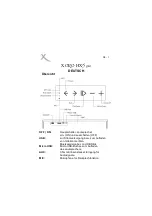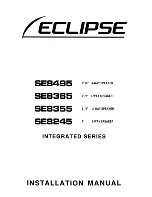
Dialing In Your System
The final step to enjoying you new system is to dial it in for optimal sound.
First, consult the manual for your receiver. It contains all the information
you will need to dial in your system. As always if you need help, visit our
website or feel free to call, email or use live chat for technical support.
Speaker Setup:
Enter the speaker setup menu on your receiver and proceed
to set all of your bookshelf or satellite speakers to the “small” setting. Tower
speakers should be set to the “large” setting. Also, if you have a 6.1 or 7.1
channel receiver but you are using a 5.1 speaker setup, be sure to set the
back surrounds to “off” or “none”. The same is true for the center channel
if, for some unlikely reason, you are not using a dedicated center channel,
you can disable the center and send the dialogue to the front left & right
main speakers.
Speaker Distance:
Sit in the most common listening position with a tape
measure and have a friend help you measure the distance to each speaker.
Then enter the speaker distance menu on your receiver and input the
distance. This step is important because it sets the appropriate time delay
for your surround sound system. Some receivers require you to calculate the
delay using a mathematical formula. Please consult your receiver manual
for details on setting the delay.
Subwoofer Setup:
In the speaker setup menu there is usually a subwoofer
selection option. Set the subwoofer selection to “Yes” or “On” if you are
using a separate subwoofer. Many receivers have a number of crossover
settings but we recommend starting with the crossover set at 80Hz and your
bookshelf speakers set to “small”. Power towers should be set to “large”.
If you are setting the crossover frequency on your receiver, you will be using
your receiver for bass management. We recommend that you set the variable
crossover setting on you subwoofer amplifier between 80Hz -120Hz until
you get a good blend. If the subwoofer is in the same plane as the front
speakers, the "0 degrees" phase position is the correct setting. Start with
the volume level at 1/3-1/2 and adjust it up or down based on the source
material and your personal preference.
Speaker Level Calibration:
One of the most important steps to setting up
your system is level calibration. Some speakers will play louder or quieter
than they should because of differing placements or efficiencies. The speaker
level calibration menu will allow your receiver to compensate for this by
using a test signal for balancing the channels. The signal moves from channel
to channel, allowing you to adjust the levels until each channel plays at the
same volume. You can do this by ear but it's better to use a SPL (sound
pressure level) meter. If you notice with actual program material that the
surround speakers play much lower than the fronts, this is normal. They are
simply supplying the subtle ambience the director intended.
16







































